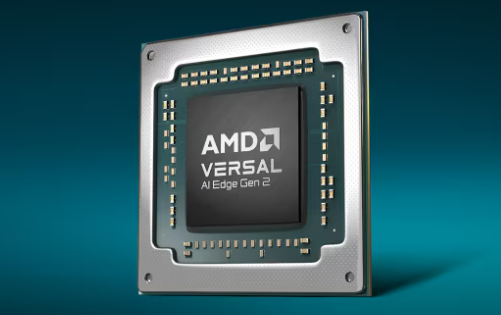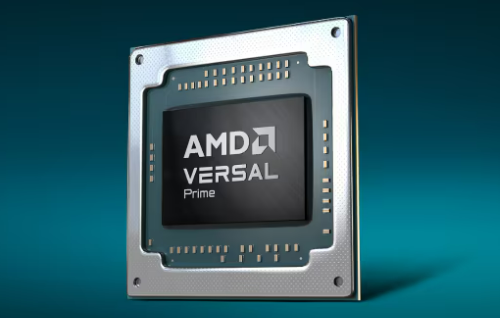
On April 9th, AMD announced an expansion to their AMD Versal™ Adaptive SoC product portfolio, officially unveiling the all-new second-generation Versal Adaptive SoC lineup. This includes the second-generation Versal AI Edge series and the second-generation Versal Prime series Adaptive SoCs, which integrate preprocessing, AI inference, and post-processing into a single device, delivering end-to-end acceleration for AI-driven embedded systems.
According to data released by AMD, in the realm of automotive L2+/L3 ADAS applications, the second-generation AI Edge series devices exhibit a fourfold increase in image processing capability compared to the previous generation. For smart city applications, edge AI devices based on the second-generation AI Edge series have reduced board area by 30% compared to the previous generation and can support twice the video stream processing, resulting in approximately a 65% reduction in board area per video stream. In the domain of multi-port video encoding and streaming processing, the second-generation Versal Prime series Adaptive SoC delivers twice the video processing power compared to Zynq MOSoC, with a 35% reduction in board area per video stream.
The Versal AI Edge Gen 2 series:

To meet the complex processing demands of real-world systems, AMD's second-generation Versal AI Edge series devices employ optimal processor combinations to accelerate all three stages of AI-driven embedded systems:
· Preprocessing: Sensor processing, fusion, and data conditioning
· AI Inference: Execution of deep-learning algorithms
· Postprocessing: Decision-making and subsequent actions
Specifically, compared to the previous generation Versal AI series, the second-generation Versal AI Edge series upgrades the internal CPU cores from the Arm Cortex-A72 to the specialized high-performance Cortex-78AE CPU cores tailored for automotive and industrial applications, supporting 2 to 8 optional cores for balanced configuration as needed. Additionally, the Arm Cortex-R5 real-time processor is upgraded to the Cortex-R52 real-time processor, supporting up to 10 cores, further enhancing real-time processing capabilities. Moreover, the inclusion of the Arm Mali G78AE GPU further enhances graphics processing capabilities. Strengthening has also been made in the programmable logic cores to achieve flexible real-time preprocessing.
The second-generation Versal AI Edge series also introduces a new AI engine, achieving a twofold improvement in AI inference performance per watt compared to the previous generation. It offers native support for FP8, FP16, MX6, and MX9 data types. Additionally, it supports digital signal processing (FIR, FFT, etc.), vision, and other inference-related functionalities beyond AI. It's noteworthy that the second-generation Versal AI Edge series integrates controllers directly into the SoC, achieving end-to-end embedded system acceleration in a single device, increasing integration and reducing latency.
The 2nd Gen Versal Prime series:

Compared to the second-generation Versal AI series, the main difference in the second-generation Versal Prime series is the absence of AI cores. Instead, it combines programmable logic for sensor processing with high-performance embedded Arm CPUs, providing end-to-end acceleration for traditional non-AI embedded systems. These devices aim to offer up to 10 times the scalar compute power compared to the first generation, efficiently handling sensor processing and complex scalar workloads.
With brand-new hard IP tailored for high-throughput video processing (including up to 8K multi-channel workflows), the second-generation Versal Prime devices are ideal for applications such as ultra-high-definition (UHD) video streaming and recording, industrial PCs, and more.
The combination of the second-generation Versal AI Edge series and the second-generation Versal Prime series products provides scalability from edge sensors to central computing for AI-driven systems.
AMD expects to provide samples of the second-generation Versal series chips in the first half of 2025, followed by evaluation kits and System-on-Module (SOM) samples in mid-2025, with mass production chips expected by the end of 2025.




